Everest/Lhotse 2016 carries on as smoothly as a season goes, and now without me. I’ll get to my situation in a moment but as I write this on Sunday May 1 climbers on the Nepal side are dealing with fresh snowfall. Many are back in base camp after successful rotations to Camps 1 and 2 with a few even following the Sherpas up the Lhotse Face and spending a difficult night at Camp 3.
I hate to be a broken record, well actually not in this case, but the season – on both sides – continues to progress nicely with few surprises and little drama. However, the press seems to be able to create drama where there is none, or perhaps it is their sources ing publicity for their companies, or careers that creates the drama.
Media Induced Drama
There have been various media reports of avalanches on the Lhotse Face and in the Khumbu Icefall. These are a bit overstated and unnecessarily dramatic, especially the one about the Lhotse Face. IMG reported the names of the Sherpas and their teams who are fixing the ropes as Rinji and Nima Tshiri from Adventure Consultants; Nawang and Namgya from Himex; Fura Gyalzen and Tenzing Cholar from Asian Trekking; Tamding and Nima Gyalzen from Jagged Globe; and Chewang Lendu and Damai Serki from IMG.
This team of Sherpas began to fix the line from Camp 2 to the summit and found the bergshrund (a large crevasse at the base of a hill) to be larger than expected. They simply went further to the climber’s right bypassing the shrund and continued their work. All in a day’s work for these guys.
Sadly, this report of “An ice collapse has closed the Lhotse Face” was widely distributed on climber’s Facebook accounts, other websites and in the general press. It created unnecessary angst for those back home.
Why this made news is another example that anything remotely out of the normal, especially if can be consider negative, makes news, around Everest. I find it particularly disturbing that some commercial guides perpetuated the story. One can only guess at their motive but I’m sure their sites got a nice uptick in volume, and their names appeared in a newspaper.
Another silly report is that helicopter flights are putting climbers in danger by flying too close to the mountain thus could cause avalanches. I invite you to Google “can helicopters cause avalanches” and decide for yourself if there are any facts to support this report from the BBC. But this is a good, credible read on the subject;
One thing remains clear – reports about Everest, no matter the source or angle brings readers and other media, social and reputable, to repost with zero fact finding.
Latest Everest News – Monday May 2, 2016
If you scan the location chart I am trying to keep updated, you will see teams on the Nepal side from base camp to Camp 3. Over on the Tibet side, they are spread from Chinese Base Camp (CBC) to Advanced Base Camp. As usual, there are reports of strong winds on the Tibet side. This is one reasons many people prefer to climb from Nepal as the mountain itself blocks the brutal north winds and base camp is much more comfortable – of course this is all relative.
- Teams are continuing with acclimatization rotations
- Teams are climbing the Lhotse Face, some at C3 for the night
- Ropes expected to set to the summit on South by May 10. At Lhotse Y cutoff now.
- North teams making normal progress with rotations
2016 Everest Base Camp Tour
This is video I took at Base Camp last week. It’s a tour from top to bottom – 17,500′ to 17,250′, about 1.1 miles in total length. Sorry about the wind noise, it drops down for most of the video but you may need to turn your volume up as Russell Brice speaks at the end.
I hope you enjoy seeing what is home for a lot of people right now.
For those only interested in Everest overall, you can stop reading now as the next (long) section goes into my experience and why I had to stop my Lhotse climb. I will continue to report on Everest as I have since 2002 over the next month. As always, if you get value from my reporting please consider a donation to find a cure for Alzheimer’s.
No Lhotse for Me
As Mark Twain said — ‘I didn’t have time to write a short letter, so I wrote a long one instead.’ I will go into a fair amount of detail on my Lhotse attempt mostly to present my experience with the hope that it can be used as a learning experience for others. I don’t have any specific lesson to suggest and leave it to the reader to glean their own, but this is what I experienced.
I am now in Kathmandu, my attempt of Lhotse over. If you climb as long as I have, things happen. I started climbing at age 38 and have now been on over 35 expeditions. This was my 6th expedition that took me into the Western Cwm. It is safe to say I know my body very well and how it performs at altitude. And I have come to accept that when things go wrong, there is a fine line between pushing and acceptance.
With that said, as I have previously mentioned, I have been fighting a cough and perhaps an upper respiratory infection almost to the day upon arriving in the Khumbu. I sought medical advice from the Docs at EverestER and from other expedition doctors. I turned back on my first climb into the Icefall after the cough became violent. I have been taking antibiotics, inhalers and standing by the Puja altar for hours on end tossing rice into the air 🙂
Early Signs
A few days ago, Kami and I took off for our rotation to Camps 1 and 2. We were on our own as the rest of the team had left a couple days earlier. We made it through the Icefall (more on this later) and to Camp 1 in decent time for the first rotation. I felt OK, not great but OK. The next day, things fell apart for me.
As we hit the midway point between Camp 1 (19,500’) to Camp 2 (21,000’), I began to crash hard – severe coughing, alarming decline in energy – walking dead – zombie-esque. I felt it was an upper respiratory infection and not a return of HAPE like on K2.
Thankfully it was one of those days in the Cwm that was not brutally hot. I moved as fast as I could towards C2 knowing that Altitude Junkies had established Advanced Base Camp there with Mila Sherpa as the cook. There would be plenty of good food and water. I could rest and evaluate my options.
The cough was a sign that something was going on in my lungs. It was not the normal “Khumbu cough” where the alveoli become irritated thus spawning a cough, but this was deeper, courser resulting in an inability to process what little oxygen was in the atmosphere. As I considered what was happening, I was at peace knowing this was out of my control and the I could do was to get myself, and Kami, out of danger.
Help from Others
Kami, knowing me well after three expeditions together, demonstrated what many Sherpas are known for: caring, competence and creativity. As I lay on my tent floor, trying to get my breath, Kami sought out help. I rallied to go to the dining tent where I sipped back tea. Soon Rob Smith from Adventure Consultants appeared along with Kami. Rob is one of the most experienced guides on Everest. We chatted, he took some vitals (my oxygen sat was in the mid 80s) and he called Phil on my behalf since our radios were having issues.
I crawled back in my tent. Next thing I knew the zipper opened and Tracee and Ritchie from Himalayan Experience appeared along with a cameraman from the Discovery Channel.
Let me pause to simply say that the western operators and many of the well established Nepali ones work together when someone needs help. There are no lines, no competition, there is a ‘oneness’ on the mountain. Phil Crampton, Altitude Junkies, and Russell Brice, Himex, have a special relationship formed over years of guiding on Everest, and Manaslu. When help is needed, they simply give and give with no questions asked.
Tracee, a Doc from Colorado whom I had climbed with once a couple of years ago, crawled in next to me.Richie, the Himex guide took notes. The Discovery cameraman scooted away after I simply said “No” to his request to capture me on film for an upcoming episode about Everest helicopter pilots saving people. To be honest, this felt invasive and like ambulance chasing at its worse.
Stats Don’t Lie
Tracee and I chatted. She took my stats. My oxygen sat was down to 75%, my heart rate and respiration soaring. While I was not urgently critical in this moment, I was not well and the potential for my health moving to urgent was real. She reported back to Russ and Phil.
Kami came in and said “helicopter tomorrow at 7:00 am” To be candid, I felt relieved as I had no idea where I would get the energy to down climb the Icefall and back to base camp.
I knew I wasn’t just hurting, but I was hurt. The infection had taken its toll and was continuing to take me down.
I slept on oxygen that night, but waking every few minutes. The only way I could actually go to sleep was if I had my headlamp on, shining against the tent wall and the oxygen mask on my face. My dreams were vivid. My body experienced spasms, not uncommon when you are at altitude and not acclimatizing. My head began to hurt. I awoke gasping for breath when I didn’t have the oxygen on. Staring at the tent ceiling, I welcomed a gust of wind, something to take my mind off my own breathing, or lack of.
While this situation seems difficult, I understood at a deep level that this was part of altitude and I simply needed to let time pass but also take control by expressing my concerns, being honest with my own self-assessment and with those who were trying to help me and finally, to be realistic about my options. I needed to get down as quickly as possible otherwise a serious situation would turn critical, and the options would become even more limited.
Going higher, or continuing the climb would be self-destructive.
As I drifted in and out of sleep, I could hear Tracee, Richie, Russ and Phil talking on the radio. I knew I was in good hands, professionals doing their . This is why I climb with whom I do, knowing that if something unexpected happens, well …
The night now passed, Kami stuck his head in my tent around 5:00 am. “How are you?”, he asked with concern written all over his face. He had offered to sleep in my tent but I said no as he needed to get his rest. Mila soon gave me black tea, in spite of lacking English skills, his concern was there. His smile brought me to life.
Tracee came over for another check. My oxygen sat was down a bit. She was convinced helicopter evacuation was the correct decision. So was I.
Standing By
Richie appeared in his down suit. The 30 something Kiwi, took control.
Richie, Mila, Kami and I stumbled from my tent at Camp 2, 21,000 feet across the broken and ice ladened landscape. The West Face of Everest loomed above up as did the Lhotse Face. I watched climbers making their way up the steep and icy surface again wondering what all the press reports were about as I could see first hand the reality.
We got to a somewhat flat area known as the landing pad for helicopters. As I stood there, I had flashbacks from almost exactly one year ago when from Camp 1, I crawled into the helicopter to be evacuated to base camp after the earthquake. The irony wasn’t lost on me and I felt only gratitude that this resource was available – both technology and piloting skills. I fully understood that while evacuations at these altitude are not uncommon, they are rare and dangerous for all involved.
Kami carved out an ‘H’ in the snow as Richie gave orders as to what jobs were to be performed once the chopper landed.
Waiting and Watching
7:00 am came and went. And the waiting game began. With radio communication spotty – remember this is at 21,000 feet and base camp is at 17,000 feet over rocky landscape – it’s amazing radio comms happen at all.
The radio crackled, “helicopter heard heading up valley”, it was the Discovery crew now assisting instead of chasing. We got in place. “Chopper landed at EBC. Not yours.” We stood down. This dance repeated a few more times until I actually saw a helicopter flying towards us, over Camp 1. I knew every second was a risk for all involved. I’m not sure I took a breath for the next minute.
Sure enough the black B3 from Manage Air appeared on the horizon, Pumori behind, the snow covered sides of Nuptse and the West Shoulder of Everest framing the approach. The rotors slicing thru the thin air betrayed any sense that this was business as usual.
The B3 came in high, I would guess flying another 500 to 750 feet above us. The standard operating ceiling was 23,000 feet, so this was curious as to why it was pushing the limits when we were available and there was no wind. The chopper dropped a bit and flew over our head, then came back for another pass, and another. Richie, assuming ground control, stood tall, arms outstretched then formally moving his hands towards the landing spot, the heli flew right by … and disappeared down valley; the rotor sound dimming as the back spec faded from sight.
We looked at one another and sat down again on the cold snow. The sun was now cresting over Lhotse and brought some warmth to an otherwise cold situation. My cough created a yellow film that I spat on the white snow, my breathing labored every time I moved with purpose. I knew if I didn’t get on a helicopter, that I was going nowhere that day other than back to my tent on oxygen with hopes for tomorrow.. and the next?
The radio transmission picked up, no one had any idea of why the helicopter had made the passes and left without their passenger. Time moved on. We moved inside a Sherpa dining tent run by Arun. I drew stares in my down suit, coughing like I should be in a hospital, Kami at my side.
The Real Thing
Richie appeared at the tent door about an hour later, he just nodded. We navigated the ice course back to the landing pad and assumed the position – sitting on the cold ice. Again, the radio squawked “I think this is yours” and with that, the familiar sound of a helicopter in thin air emerged. After almost three weeks at EBC, this sound was familiar as there were as many as 20 at 30 landings each day. I used to bristle at them, now I welcomed the sound of just one.
The B3’s approach was quite different this time – direct and low. Richie took his spot, arms outstretched. The chopper flew directly towards him, making a slow circle with the nose of the B3 pointing down Cwm. This was it. The Nepali pilot slowed the huge machine just above us, snow and ice began to kick up. We stood our ground in the gale.
In slow motion, the helicopter sat down gently on the snow. I risked looking into the maelstrom for a moment to see Richie lowering his arms, directly the pilot. The pilot was controlling his machine with precision. It landed with ease, rotors going at a level just below lift off velocity, ready to rise with the touch of the controls.
I ran towards the helicopter as Richie opened the door. Kami, close behind me, carried my pack. I crawled into the chopper, gasping for air, behind the pilot. All the seats were removed to reduce the weight. Kami slid my pack in next to me. This was so familiar, only twelve months ago, for a different reason but the same objective. A few moments earlier, we had been informed that they would only take one passenger. Kami simply smiled at me and said “its OK”.
The rotor noise whined slightly higher as the B3 gently lifted off the ground, the pilot skillfully let gravity and power take the chopper lower down the Cwm. In a moment we were flying hundreds, then thousands of feet off the ground. We flew over Camp 1, the Khumbu Icefall and then Everest Base Camp – all in a blink where it took hours, if not days, to reach our take-off spot by foot.
Sitting on the floor, I let my head fall back against the back of the helicopter, my down suit providing cushion and warmth. I involuntarily gasped for air, then realized it was not the infection but emotion. My eyes welled with tears. My thoughts ran the table. I looked at the back of the pilot’s head with thanks and admiration. He focused on flying.
I looked out the lower windows recognizing the villages we passed. We began to go lower and landed in Pheriche where they had off-loaded the seats. Yet again, I was met with a camera in my face – nothing was said as to who, or why until I asked for the camera to stop. The ambulance chasers were pushing hard to get their story regardless of the circumstances.
After putting the seats back in, we flew to Lukla. The B3 returned to EBC to get my duffels and two other passengers. After a short wait, I was back on the same chopper for the 45 minute flight to Kathmandu where an ambulance met me.
Test and more tests
At Swacon Hospital, the staff took control. Amazingly, the Chief of Staff had fielded multiple calls from Discovery asking to film me in the hospital. She told them no.
I had blood tests, an EKG to rule out heart trouble – they had a lot of experience with climbers and knew that some symptoms masks the true underlying problem – and a chest x-ray. This last test showed what was really going on.
As I suspected, I had a pretty bad upper respiratory infection. The x-ray showed a large “cloud” on my lower right lung. The official diagnose was bi-basal crepitations in my right lung i.e. Crackles, crepitations, or rales are the clicking, rattling, or crackling noises that may be made by one or both lungs of a human with a respiratory disease during inhalation. (from wikipedia)
I spent the night in the hospital and began ments with a nebulizer, inhalers, antibiotics and more … oh my. They knew what they were doing and were not going let me get away. I am grateful for their expertise and commitment – halfway around the globe for this Memphis boy.
Kami is back at Everest Base Camp now and will return to his home in Pangboche. His climb is over as well. The words love and gratitude are simply not enough to express my feelings for this man.
So, I will now work on getting home. I am grateful as always to have had another opportunity to climb in Nepal but there is one more chapter to this story.
Icefall Issues
As I have written ad nauseam, this has been a warm year at Everest Base Camp.
As Kami and I were climbing through it to Camp 1, we had a near miss. I do not want to over dramatize this or give fodder for those who use dangers on the south as a marketing tool for their climbs from the north, however, the danger is real and not isolated to Everest-South as many mountains around the world are melting, including Everest-North.
As we were climbing from EBC to C1, we were about half way thru the Icefall around 5:00 am, I heard a sharp crack and low groan. I instantly knew the Icefall was shifting. It can move as much as three feet a day so this was not unusual but to be this close was concerning. Kami was about a minute ahead of me. Kami is fast, I am slow.
I continued to move then heard a loud, pronounced sharp slap. I spun around to see a huge ice block fall onto its side. As it slammed into another ice block, and the boot path Kami and I were on 30 seconds earlier, brightly lit ice shards flew into the air – it was like a fireworks show of cold, frozen sharp ice – all started by a random collapse.
Kami turned back to me. With no words, we both moved as quickly as possible to clear the area. I’ve never seen the Icefall so fragile and my first trip through was in 2002.
Wrap Up
Climbing is dangerous, the human body fragile. When I go on a climb, I understand the risks as do the people I climb with. Some climbs go easily, others make you work for it and then others push you to the limit – and beyond. I’ve been on all.
This climb ended up being more about self understanding and responsible decision making. This is not a self-serving statement. If I had pushed to climb higher, I might not have been able to climb lower.
Many times in life we are presented with difficult choices. Sometimes we are hit by diseases like Alzheimer’s that don’t ask and don’t care. I was hit by a bacteria that didn’t ask, and didn’t care. But unlike those with Alzheimer’s, I had options and was determined to fight for another day.
Life is funny – funny peculiar, not funny ha ha as my mom, Ida, would say.
We push ourselves to the limits only to discover who and what we are in the moment.
Yes, this was a difficult climb, and I wouldn’t have traded it for any other way to spend my April.
Climb On!
Alan
Memories are Everything


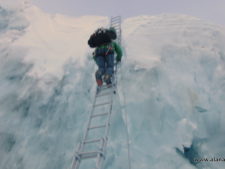
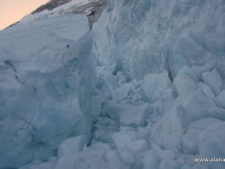
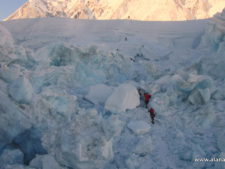
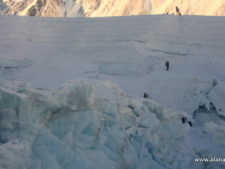
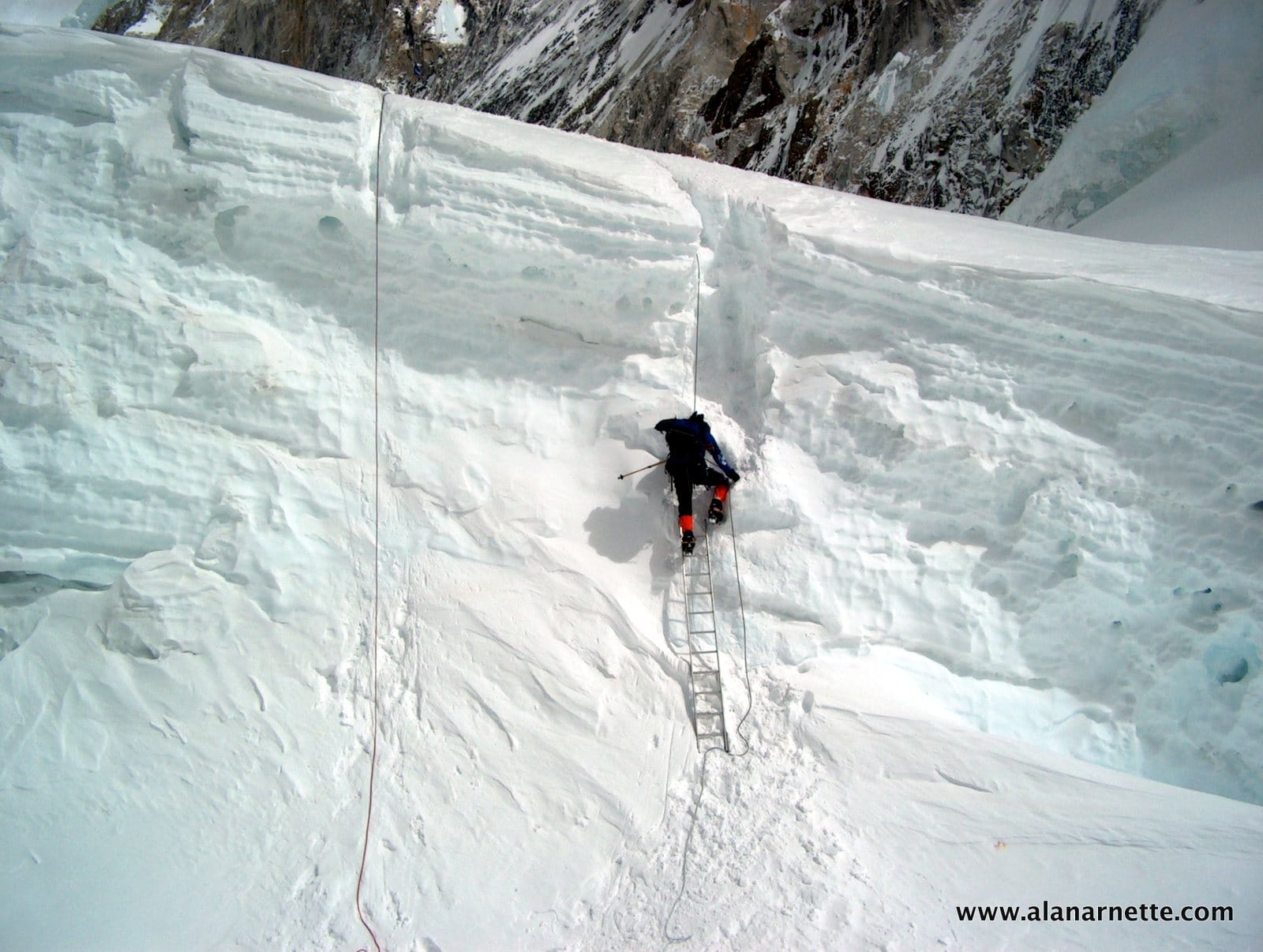

13 thoughts on “Everest/Lhotse 2016: Season Continues, But Not For Me”
Good decision, Alan. And I understand your disappointment. Sorry I missed you in Kathmandu. Next time, perhaps.
Alan I’ve followed your blog for years. I’m sad you had to call it quits this season but you know better than most to listen to your body. The clean Colorado 14er air will have you back on the climb in short order, as you also know Lhotse will always be there for you. Hopefully we’ll be reading about your Lhotse climb next year (or maybe this Fall 🙂
Get well.
Climb On!
Hi Alan here I am again but so sad to read of your big disappointment. What a charming chappie you are. The majority of your followers agree entirely with your decisions and those of us who follow you time and time again know you are able to read both your body and the mountains. I would never encourage you to change you mind on any decisions you make.We all know the mountains will still be there tomorrow.You had a very experienced team of carers looking out for you and all wanted you taken to a place of safety with good medical attention.It would have been selfish of you to fulfill your own ambitions whilst causing extra concern and worries for your team mates, a thing you would never do.I loved the trip round EBC, how organised it all looked.Get well soon and thanks again for all the heartfelt blogs. Climb on Alan, memories are definitely everything. Cheers Kate
Great video of Base Camp, I’ve been trying to find a video of ‘daily life’ at Base Camp. It’s like watching a Discovery Channel documentary the quality was so good. If you’ve got time, let us know what you shot it with, was it a digital camera or an iPhone?
Another well-written post. Thanks for all you do to share the honest realities of high-altitude climbing with the world.
Sad you won’t be continuing up Lhotse; Glad you have the wisdom to come home safely.
Climb On!
So glad you listened to what your body was telling you. Lhotse isn’t going anywhere and will be there when you are ready the next time!! Safe travels back to Colorado and thank you for sharing your experiences. Climb on, Alan!!
Alan, so happy to hear that you are safe and healing. I’m sure making the decision to end your climb was difficult but the right one. Wishing you a speedy recovery and as always, I will follow your Everest updates from my armchair in the plains. Climb on!
Alan thank you so much for sharing with us all. Very sad for you but you know in yourself it was the right decision and really only you and your body knows when something is not right. Your video at base camp was simply amazing and gave us an idea of how big EBC actually is. I presume you must have taken this before symptoms started as you sounded good. Well done on your decision and glad you are safe. I have lived through you what it’s really like up there. Thank you!
The true sign of a very skilled & experienced climber – the ability to know when to stop/turn back. Good for you Alan & I hope your recovery continues.
glad to see you sound and safe and doing well alan, wish you a quick recovery..your life is more important than any climb..
Glad to know that you’re safe and feeling better now, Alan. Wish you a speedy recovery.
Thank you for all the updates/videos/pictures.
So sorry to hear that your expedition didn’t go as planned but glad that you are safe and in capable hands in Kathmandu. Best wishes for a speedy recovery and I look forward to following your next adventure!
I commend you for taking good care of yourself Alan. As you always, you set a good example for others in choosing to discontinue for your own health.
I really like the video of base camp and in those few minutes showed and explained many things that I was curious about. Wishing you a speedy recovery and thank you for working so hard to bring attention to Alzheimers research and a cure. Ginny Lyford, Sunriver, Oregon
Comments are closed.